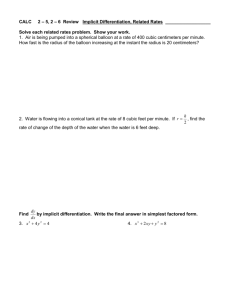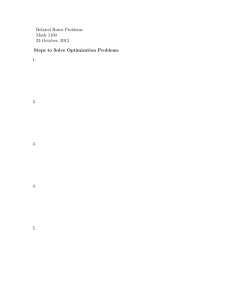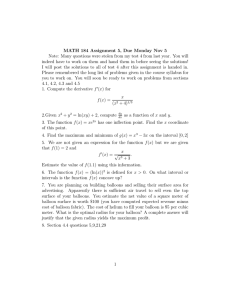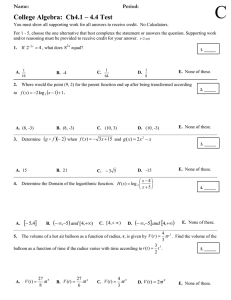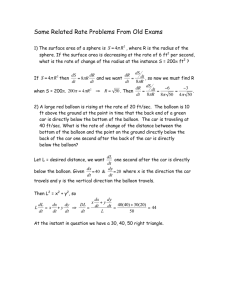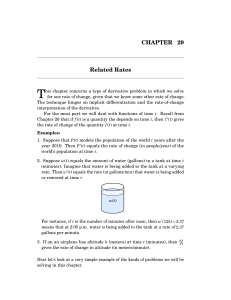Related Rate Problems Involving Volumes
advertisement
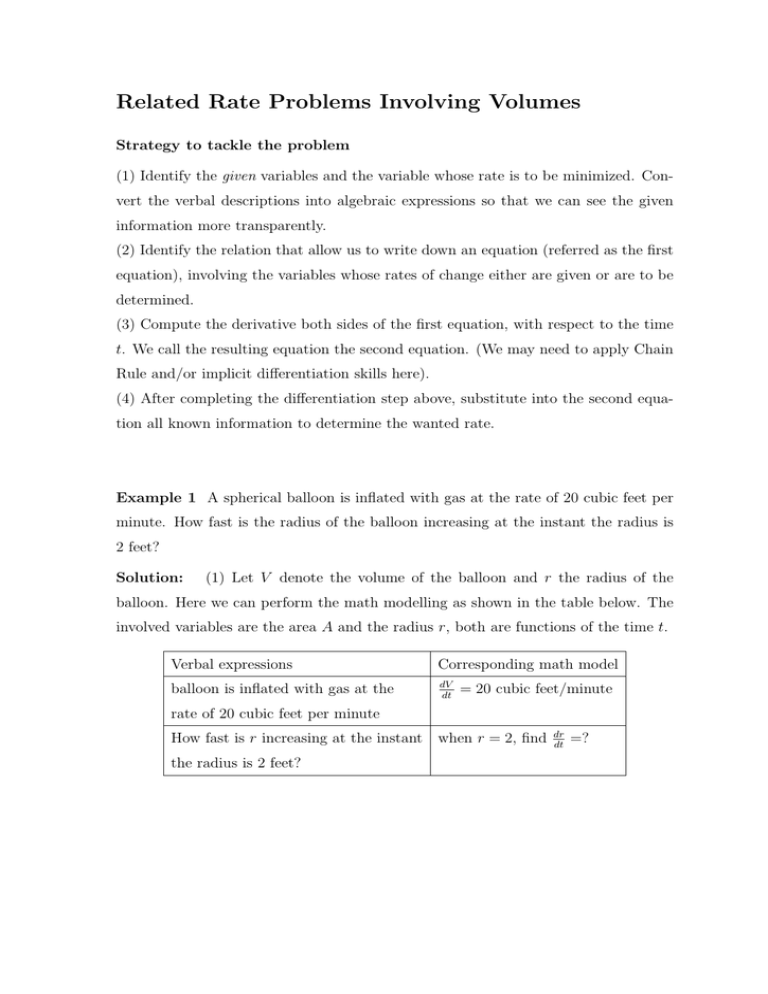
Related Rate Problems Involving Volumes Strategy to tackle the problem (1) Identify the given variables and the variable whose rate is to be minimized. Convert the verbal descriptions into algebraic expressions so that we can see the given information more transparently. (2) Identify the relation that allow us to write down an equation (referred as the first equation), involving the variables whose rates of change either are given or are to be determined. (3) Compute the derivative both sides of the first equation, with respect to the time t. We call the resulting equation the second equation. (We may need to apply Chain Rule and/or implicit differentiation skills here). (4) After completing the differentiation step above, substitute into the second equation all known information to determine the wanted rate. Example 1 A spherical balloon is inflated with gas at the rate of 20 cubic feet per minute. How fast is the radius of the balloon increasing at the instant the radius is 2 feet? Solution: (1) Let V denote the volume of the balloon and r the radius of the balloon. Here we can perform the math modelling as shown in the table below. The involved variables are the area A and the radius r, both are functions of the time t. Verbal expressions Corresponding math model balloon is inflated with gas at the dV dt = 20 cubic feet/minute rate of 20 cubic feet per minute How fast is r increasing at the instant the radius is 2 feet? when r = 2, find dr dt =? (2) From geometry, we know that V = 43 πr3 , this is the first equation. (Note that we want dr , dt and that V and r are involved in this equation). (3) Compute the derivative both sides of the first equation, with respect to the time t, to get the second equation: dV dr = 4π · r2 · . dt dt Here, as r = r(t) is a function of t, we applied Chain Rule to get (4) Substitute the given data r = 2, and dA dt Solve for dr , dt to get dr dt = 20 16 = 5 4 dr dA dr = 4π · (2)2 = 16 . dt dt dt feet/minute. = 3r dr . dt = 20 into the second equation, to get the second equation 20 = dr3 dt
